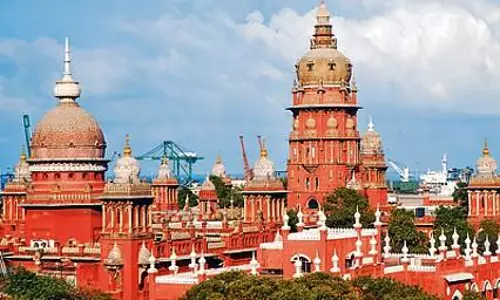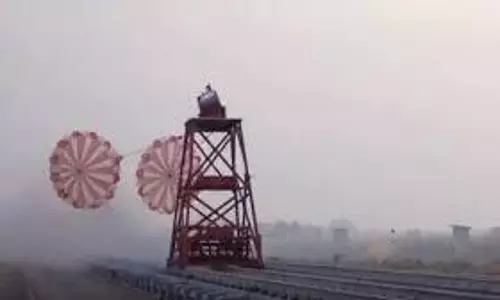
Trapped workers in Uttarakhand tunnel face health risks after 120 hours
text_fieldsDehradun: Efforts to rescue 40 construction workers trapped under debris in Uttarakhand's Uttarkashi have reached a critical juncture as their prolonged entrapment raises alarming concerns about their physical and mental well-being.
The workers became trapped within the tunnel on November 12 due to a collapse at the under-construction Silkyara Tunnel. International elite rescue teams from Thailand and Norway, known for successful operations such as the Thai cave rescue in 2018, have been mobilised to assist in the ongoing rescue operation, reported NDTV.
Rescuers have made progress by drilling up to 30 metres into the debris and installing five pipes to supply essential provisions like food and oxygen to the trapped workers.
Doctors emphasise the critical need for comprehensive rehabilitation for the workers given the prolonged confinement, fearing potential mental trauma and physical recovery necessities. Dr. Archana Sharma, a consultant clinical psychologist, highlighted the emotional turmoil the workers might be experiencing, describing feelings of fear, helplessness, trauma, and uncertainty about their survival.
Dr. Ajay Agarwal, Director of Internal Medicine at Fortis Hospital, Noida, warned of potential panic attacks due to extended confinement in an enclosed space. He expressed concerns about health risks from the confined environment, such as fluctuating oxygen and carbon dioxide levels, underground cold temperatures leading to hypothermia, and possible unconsciousness.
The rescue operation faces several challenges inherent to construction sites, notably the risk of falling debris causing severe injuries like fractures and open wounds, further compounded by unhygienic conditions that heighten the risk of infections.
Dr. Ajay Kaul, chairman of Cardiac Sciences at Fortis Hospital, Noida, highlighted the risk of heightened carbon dioxide levels affecting breathing, potentially leading to suffocation and serious health issues like asphyxia.
The rescue effort received a significant boost with the arrival of an 'American auger' machine airlifted from New Delhi. This specialised equipment, renowned for its efficiency, aims to penetrate through 70 metres of debris, a crucial step in reaching the trapped workers. The machine operates at a theoretical speed of 5 metres per hour and is expected to cut through rock that fell from the roof during the rescue attempts.
Located over 30 kilometres from the collapsed tunnel, the Chinyalisaur airport received the disassembled machine. The plan is to deploy this specialised equipment to excavate a passage through the debris, creating a pathway to access the trapped workers.
The collapsed tunnel is part of the Char Dham project, aiming to enhance connectivity to the significant Hindu pilgrimage sites of Badrinath, Kedarnath, Gangotri, and Yamunotri.























